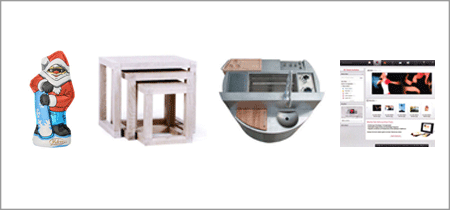An industrial design can be defined as the outward appearance of a product or part of it, resulting from the lines, contours, colours, shape, texture, materials and/or its ornamentation.
Designs may be protected if they are unique, meaning no identical design has been previously made available to the public. They must have individual character, that is to say the relevant consumer would find it different from other existing designs. A design cannot protect the function of a product. The design or shape of a product can be synonymous with the branding and image of a company and can become an asset with increasing monetary value.
An effective system of industrial design protection benefits consumers and the public at large, by promoting fair competition and honest trade practices. This encourages creativity, and promotes more aesthetically attractive products. Protecting industrial designs helps economic development, by encouraging creativity in the industrial and manufacturing sectors, as well as in traditional arts and crafts. It can also contribute to the expansion of commercial activities and the export of national products.
Industrial designs are applied to a wide variety of products, from technical and medical instruments to household products, electrical goods, clothing, motor vehicles and jewellery.
In order to apply for design registration, the applicant must be the proprietor, that is, the owner of the design. The proprietor can be the author of the design or the employer of the person who created the design if this was done in the course of the employment.
Examples of registered designs showing packaging, sets of products, composite products and web design:

In Ireland, the Industrial Designs Act 2001 is the primary legislation dealing with industrial designs in Ireland. An application to register an industrial design is made to the Controller of Intellectual Property in the Intellectual Property Office of Ireland.
In the European Union, under Council Regulation (EC) No 6/2002 as implemented by Commission Regulation(EC) No 2245/2002, two methods of design protection applicable throughout the EU are available: namely, the Registered Community Design which confers protection through a registration process and, the unregistered Community design right which, as the name suggests, is not subject to a registration system. In Ireland, SI No 27/2003 European Communities (Community Design) Regulations 2003, gives effect to Council Regulation (EC) No 6/2002.
The Community design is a unitary right that has equal effect across the European Union. The Community design registration process is administered by the European Union Intellectual Property Office (EUIPO) based in Alicante in Spain. The unregistered design right has existed since 6 March 2002 while the registered design form came into effect on 1 April 2003. In relation to terms of protection, an unregistered Community design lasts for a period of 3 years from the date on which the design was first made available to the public within the Community. A registered Community design lasts for up to 25 years from the date on which an application for registration was filed, subject to the payment of maintenance fees. In terms of effect, the unregistered Community design provides useful, short-term protection for items of short market duration. The registered Community design provides substantial cost savings compared to obtaining national registrations in individual European countries.
Design protection is obtainable also on an international basis through the Hague Agreement administered by the World Intellectual Property Organisation (WIPO) which offers a simple and cost-effective system for obtaining registered design protection in multiple participating countries. The Hague Agreement provides a mechanism for registering an industrial design in several countries by means of a single application, filed in one language, with one set of fees. The EU acceded to the Hague Agreement in September 2007. This accession allows EU companies and designers, including those from Ireland, to obtain protection for a design not only throughout the EU with the Community Design, but also in the countries which are members of the Geneva Act of the Hague Agreement.
Related websites
Intellectual Property Office of Ireland
European Union Intellectual Property Office (EUIPO)
World Intellectual Property Organisation (WIPO)